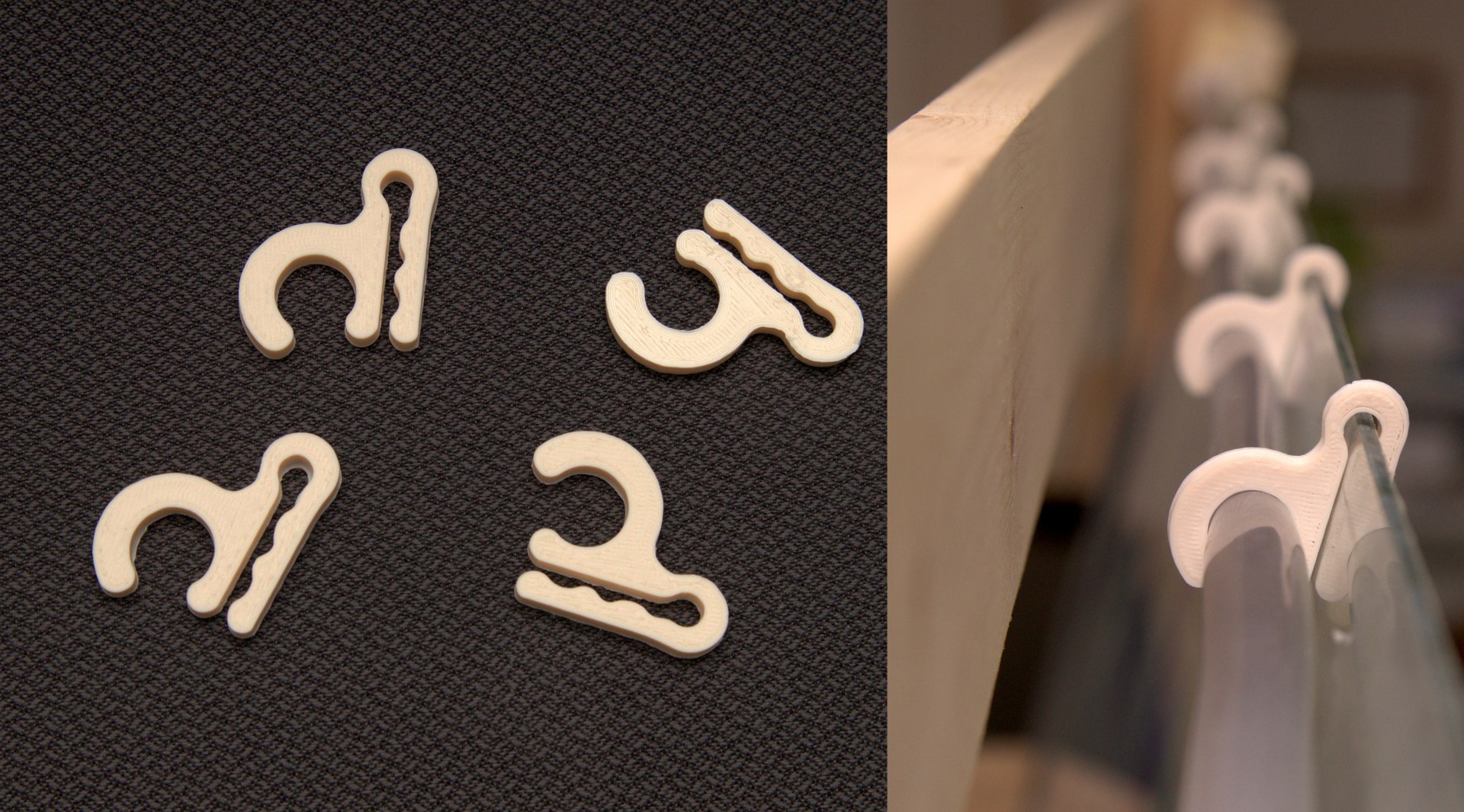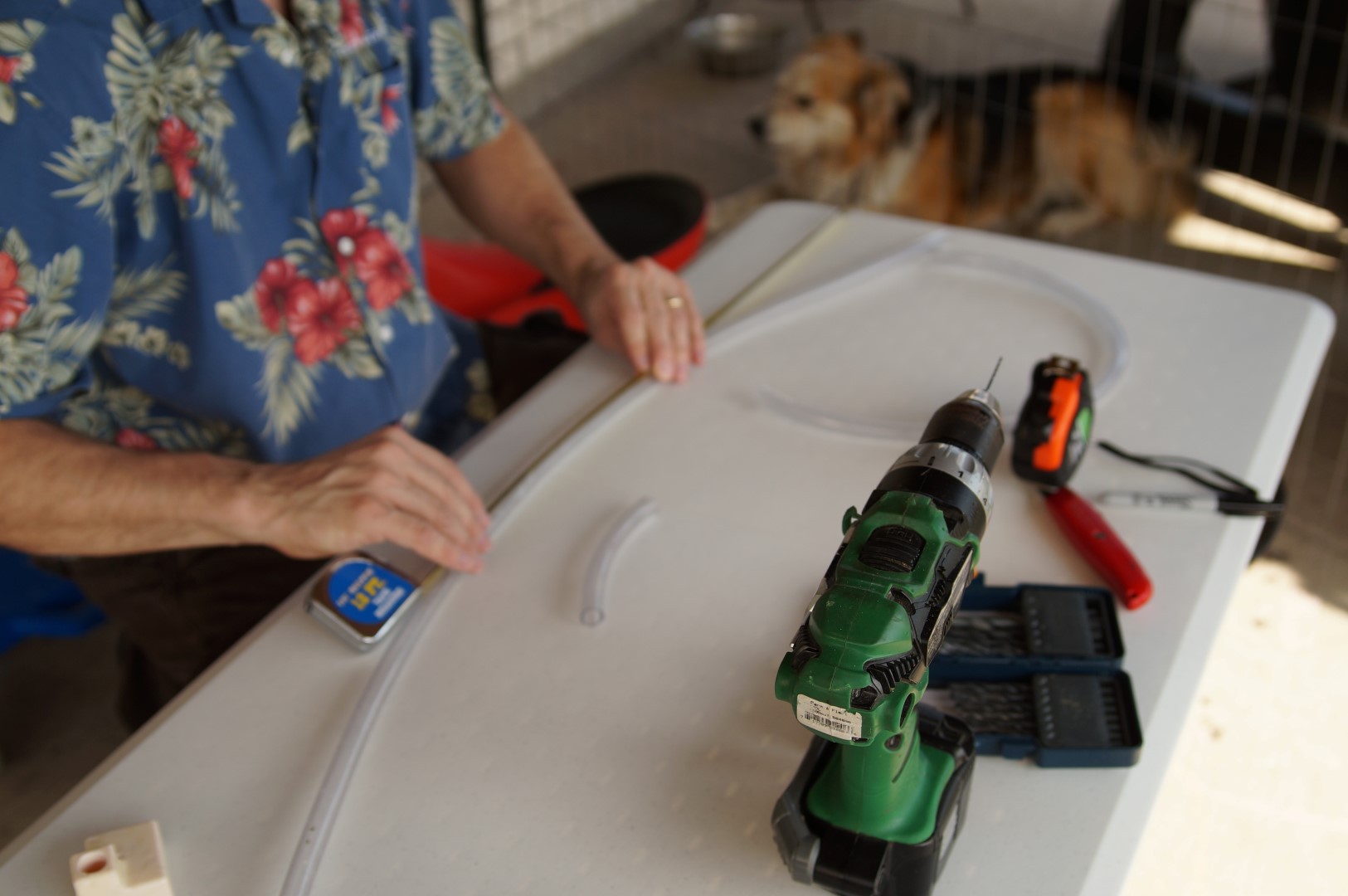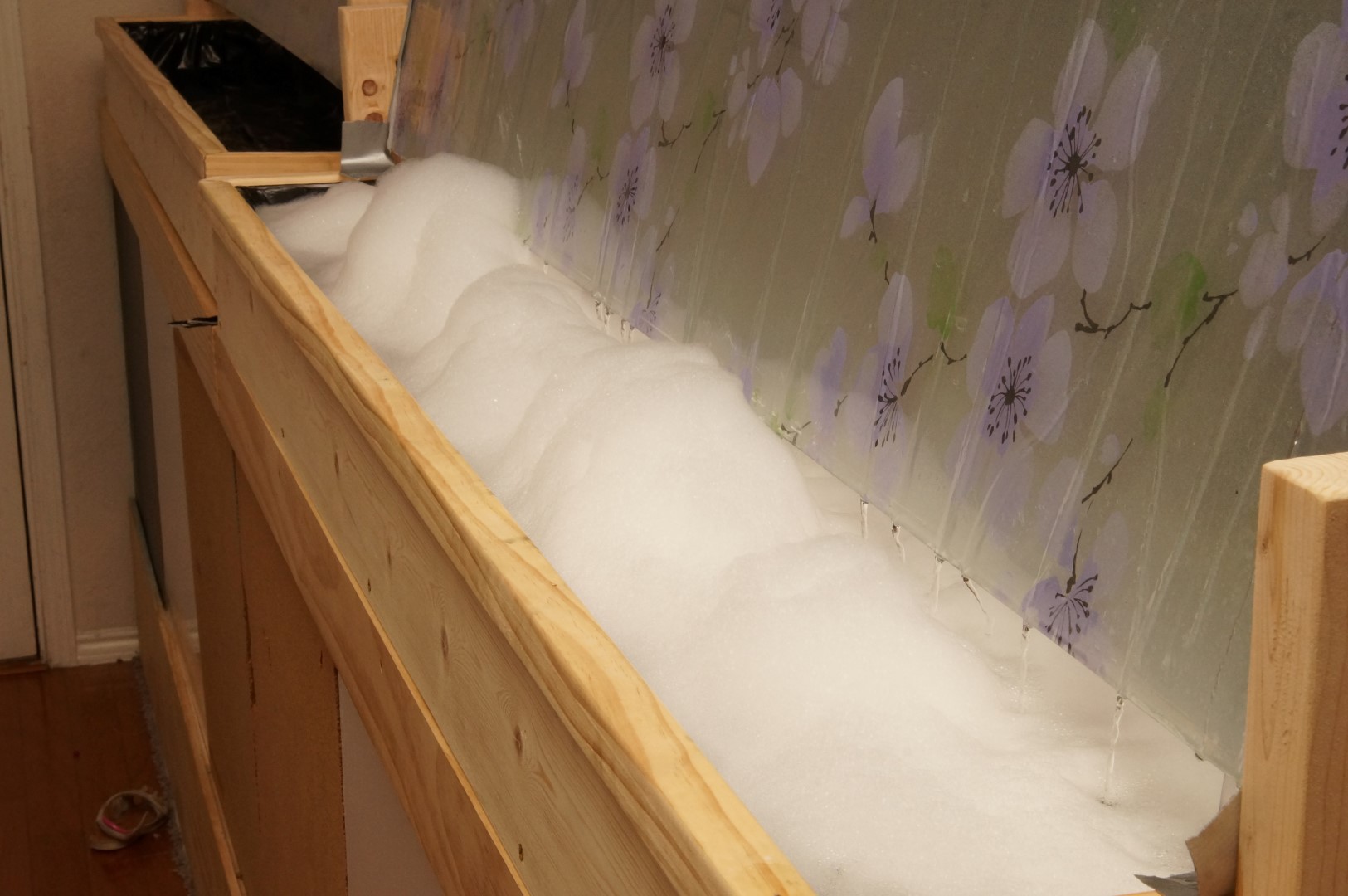I ordered two EcoPlus185 water pumps with an output of 158gal/hr and a head height of 4 feet. When they arrived, I placed one in the water trough and measured that I would need about two feet of vertical tubing. Across the top edge of the glass, I needed five and a half feet of tubing.
I cut both pieces of tubing, and then drilled the holes in horizontal tubing. I opted for a 1/16” drill bit and spaced the holes about a half inch apart.
I assembled the tubing and a pump for one 6-foot section and added some Silicone II around the 3D-printed fittings to help minimize the probability of leaking around the back side of the glass. The silicone took a few hours to set, so in the meantime, I generated some 3D models of a hose clips to hold the horizontal hose along the top of the glass. After printing and testing them, I selected one that gripped the hose and glass best and printed a few more of them. The .STL file for the hose clip can be found here.

With the horizontal hose secured in place, I was ready for a test run. I plugged in the pump..water went up the hose…and started coming down the front of the glass! Alas, the excitement was short lived…While there wasn’t any water leakage, there were a few problems:
-The water flow was considerably better closer to the pump. In fact, the water didn’t even fill the horizontal tube at the far end, so apparently the flow rate was not high enough.
-The water wasn’t coming down the glass as a flat sheet, but would instead collect into small streams (not the effect I was hoping for).
-The shower glazing along the vertical edge of the glass kept the wood dry, but at the bottom where it ran off, some water landed on the top edge of the trough. I’ll need to find a way to redirect water inward (away from the edges) at the bottom of the glass; I’ll save this problem for a little later (a little duct tape will do the job in the meantime)...
I decided to try using both pumps in one trough (instead of the plan for one pump per trough) to see if it would help with the flow rate issues. I 3D printed a reversed version of the over-the-edge-3D-printed piece to use at the opposite end of the glass. After sealing it and testing with two pumps, the flow rate was somewhat improved but still less than I wanted. Also, the water continuedcollecting into streams as it flowed down the glass surface.
I resigned myself to ordering more powerful pumps, and opted for four PP29116 pumps (two per water trough). It is rated for 291gal/hr, and even at 2ft head height, will still provide 251gal/hr.
In the meantime, I thought I would try one more thing to get the water to flow in a nice sheet down the surface. I researched surfactants and decided to add a little laundry detergent to the water.
Turns out that was simply a bad idea…it just made a bunch of suds, and if you look closely, you can see the water continues to group into individual streams. After letting the kids play with the bubbles for a bit, I pumped out all the water and refilled the trough.
 infinityis
infinityis

Discussions
Become a Hackaday.io Member
Create an account to leave a comment. Already have an account? Log In.
here's a good pic of a manifold in use on a rocket test stand flame deflector. the flame deflector is covered in 1/8" holes that need to all squirt out water at the same pressure so the manifolds are huge in relation to accomplish that. http://www.wired.com/2012/10/spacex-texas-rocket-test/#slideid-132851
Are you sure? yes | no